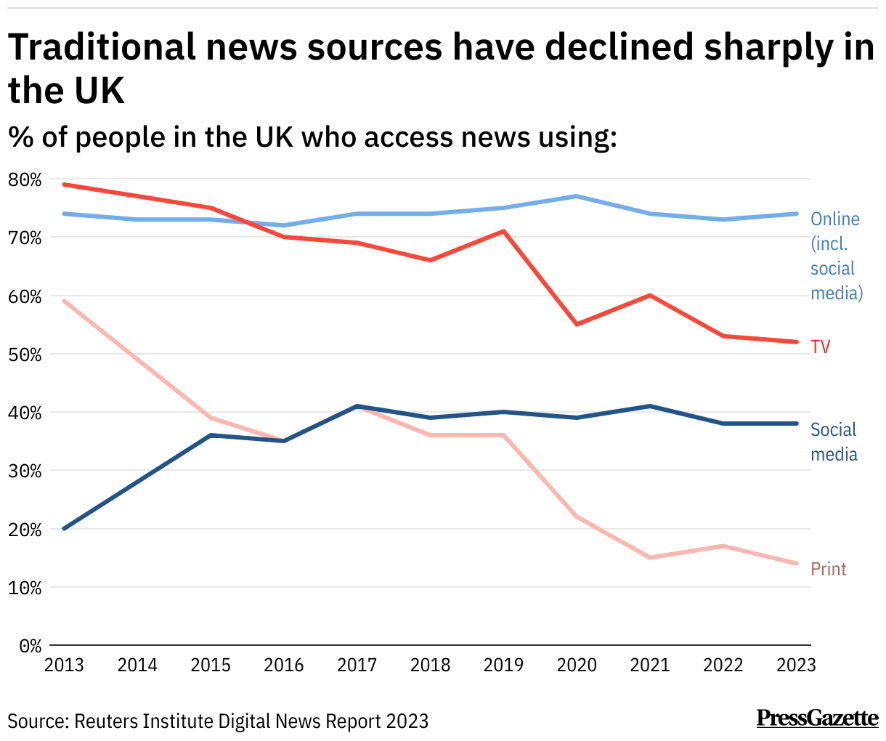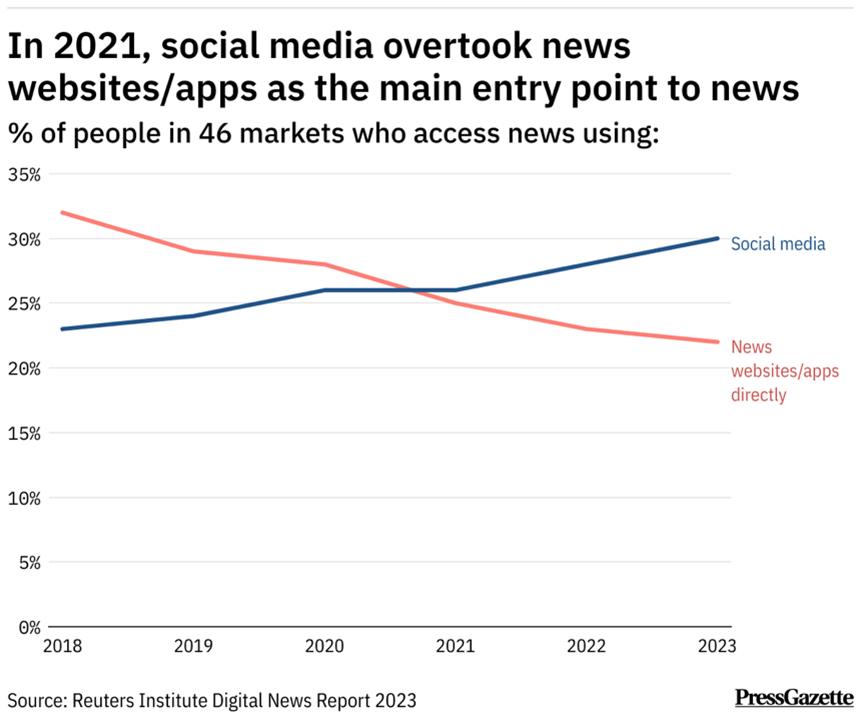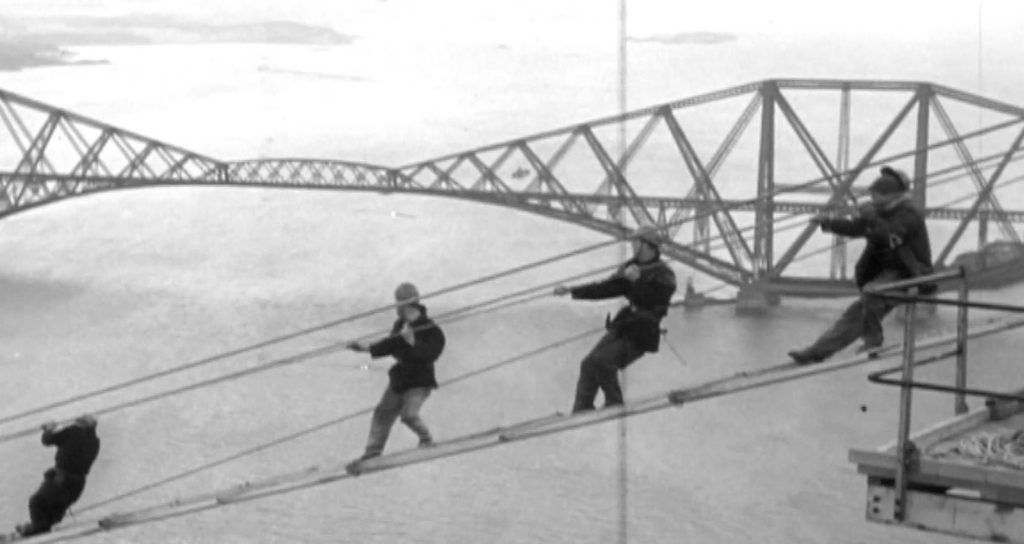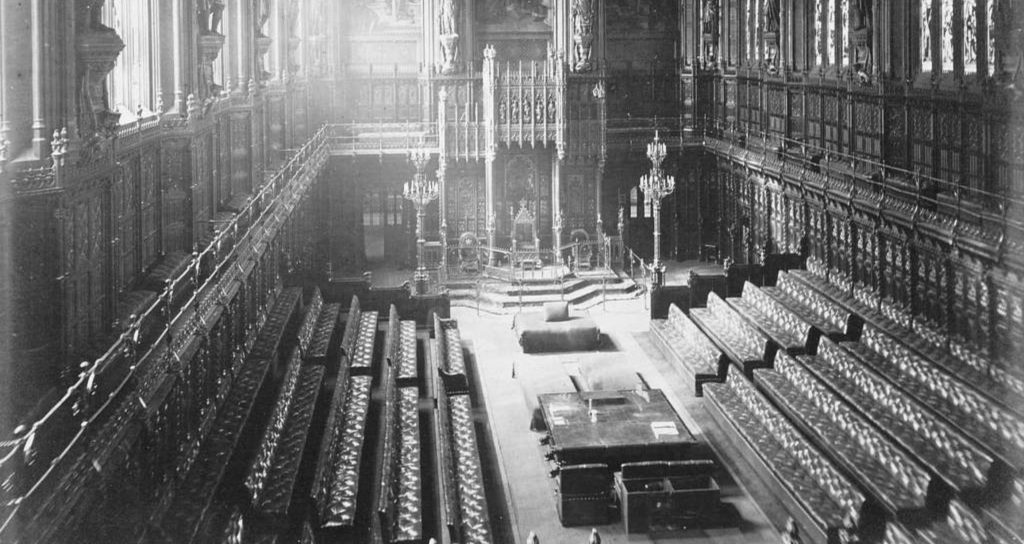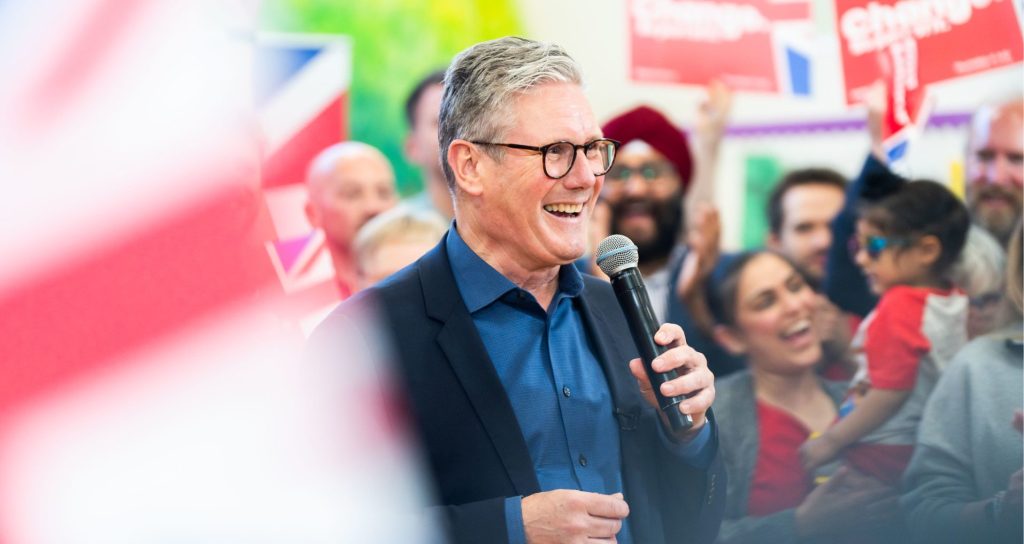There are currently more PRs than journalists. The data comes from a recent review of the UK 2021 census results and gives a fascinating insight into the changing media industry, underpinning the dramatic shift in the world of journalism and communications.
So, what does this mean for those of us on the comms side of the fence? Against the backdrop of the digital revolution, communication strategists should be taking stock and reviewing how they tell their stories.
Those of us in the communications industry are fully aware that the media landscape has changed and is continuing to change rapidly. In 2021, there were over 55,000 journalists across England, Wales and Northern Ireland with an estimated 5,000 journalists in Scotland (Scottish census results have yet to be published). That’s an astonishing 20-25,000 fewer than when the Labour Force Survey was completed in 2019. Fast forward two years from the census, and I suspect that number will have decreased again.
On the other side of the fence, there are now 9,000 more PRs than there are journalists, with over 26% aged between 25 to 29. Anecdotally, I suspect a portion of those PRs will be journalists who have hopped the ‘fence’ and joined the world of comms.
Changes to how we consume news
Print media, once a formidable force, is still grappling with a new reality as digital platforms and social media take centre stage. Most of us will know a journalist whose role has become redundant or changed as the traditional pillars of journalism shudder from the tremors of the social media age.
We see and feel the much greater focus on rolling news to feed the 24-hour news channels and the social media beasts that we now so heavily rely on – breaking news notifications pinging on phones in meetings, typos in articles as outlets race to be the first to break a story or the increase in the dreaded click-bait headline.
Traditional news sources have declined sharply in the UK, with the use of print down 45% and TV down nearly 30%, in the last decade alone. Everyone has a phone (and seemingly an opinion), so what makes the news, and how the news is managed, is changing and evolving. And that’s without fully understanding the impact of AI.
A recent study by Press Gazette found that social media as an entry point to news is growing, with the number of people accessing news directly from news websites and apps falling – over four in ten (43%) of people across all markets said that their main way of accessing news was via social media, compared to 18% in 2015. This shift is mainly down to the changing habits of younger audiences (18-24) who have grown up with social media and are looking to newer platforms like TikTok and Instagram for a lighter take on the news.
The rise of digital outlets, flourishing with fresh voices and unconventional perspectives, is redefining the boundaries of news. The general public have taken on an increasingly important role in conversations around news, whilst mainstream journalists and news brands remain more prominent in conversations about news on Twitter and Facebook, Press Gazette argues.
What does this mean for comms professionals?
So how do brands navigate this shifting landscape? Well, behind this evolution remains the stalwart of comms strategies up and down the land – the fundamental importance of forging meaningful relationships with journalists. Most of us say we have less time these days but now, more than ever before, building and maintaining relationships is critical to brand story success.
This is especially true when there are more PRs than there are journalists. Without a strong relationship or a strong story, getting cut through for your brand is like a blood sport – it’s dog-eat-dog out there.
That’s where experienced PRs are worth their weight in gold. They can place stories, they can frame stories, they can educate so that stories are factually correct and – most importantly – they know how to work with journalists to support everyone to do their job to the highest standards.
But what makes a good journalist relationship and why is that so important for those of us on the comms side?
How to build media relationships
Firstly, effort. It takes time to build trust and authenticity. Journalists are gatekeepers of truth and trust is their currency. As more people are becoming increasingly concerned about misinformation and fake news, especially those who use social media as a source of news, quality journalism and quality public relations matter – to your brand, your customers, your colleagues, your stakeholders… and to the public.
By taking time to cultivate genuine relationships, you become a trusted and reliable source of information. When journalists know they can rely on you, they’re more likely to give your story the attention it deserves.
But you also need to navigate the storytelling maze. So many times, brands or campaigns – and PRs – think a story is important. But what’s important to you might not be on the agenda of journalists. By building connections, you gain insight into their storytelling needs and preferences. You become a collaborative supporter, armed with a unique perspective or compelling narrative which is aligned to the news agenda and ultimately the demands of editors.
In return, creating strong and collaborative relationships with journalists can unlock a realm of possibilities. They provide access to interviews, feature articles and expert opinions. As your reputation solidifies, journalists turn to you as their go-to source – magnifying your visibility and expanding your influence.
Journalists can also help you weather a storm. A crisis can strike when least expected and a solid rapport can act as a shield during tumultuous times. As a national editor once said, “it’s harder to do someone over when you’ve looked them in the eye and had a coffee with them”.
Disagreements or a difference of opinion is healthy in a journalist / PR relationship. It happens and is a brilliant result of freedom of speech; not having a difference of opinion or probing questions to answer is a far worse outcome than having them. The trick to managing different views is to respect and acknowledge that everyone has a job to do and getting to a point where there are no hard feelings.
By nurturing these connections, you gain the chance to proactively articulate the narrative – mitigating potential damage and restoring trust.
Change isn’t always a bad thing
So as journalism and the way PRs work changes, we say embrace the winds of change. Take the opportunity to review, assess and redefine how you communicate. Just as the journalism landscape is undergoing a profound metamorphosis, disrupting norms and reshaping storytelling as we know it, communications professionals are too.
It’s time to stop focussing so much on print and embrace the comments section of news outlets on social media. Have a look at your contacts list and work out who you haven’t spoken to in a while. Re-tweet, re-post and engage in conversations online. Heck, ring a journalist and ask them for a coffee and a natter.
By building trust, unlocking the art of collaboration, seizing opportunities, and weathering storms together, we can become the architects of our narrative. Armed with the knowledge that journalism’s evolution is an invitation to shape the future together, one relationship at a time.

